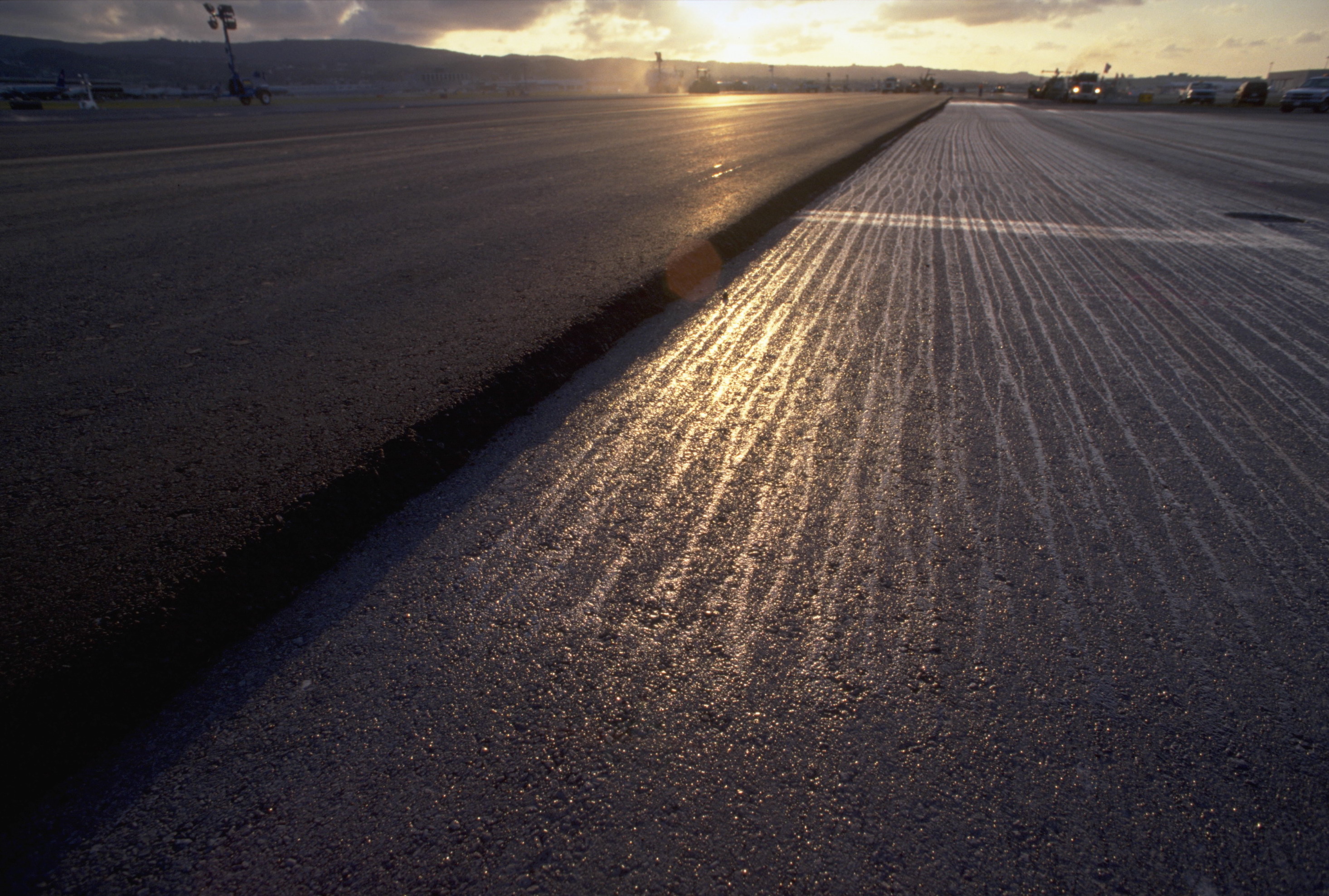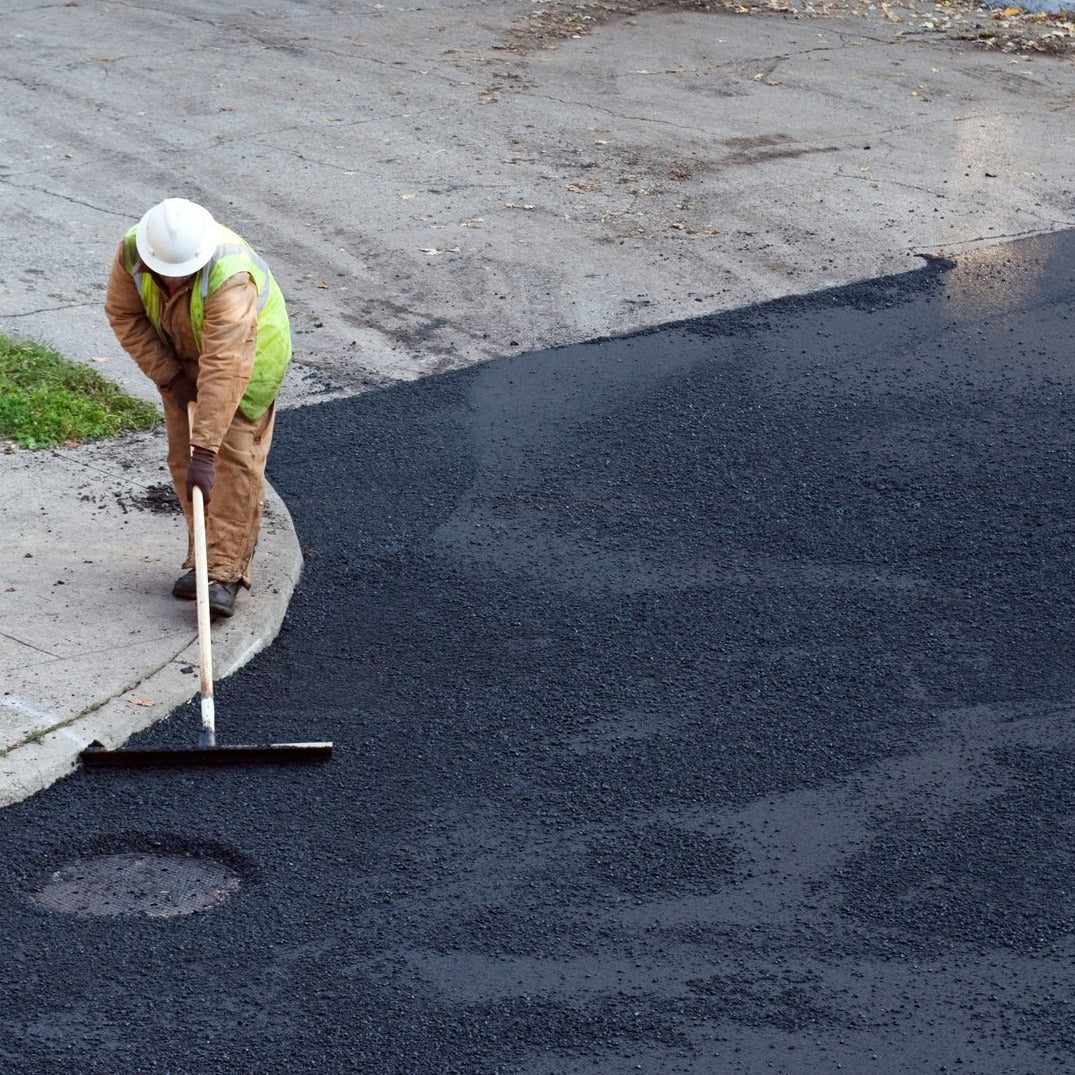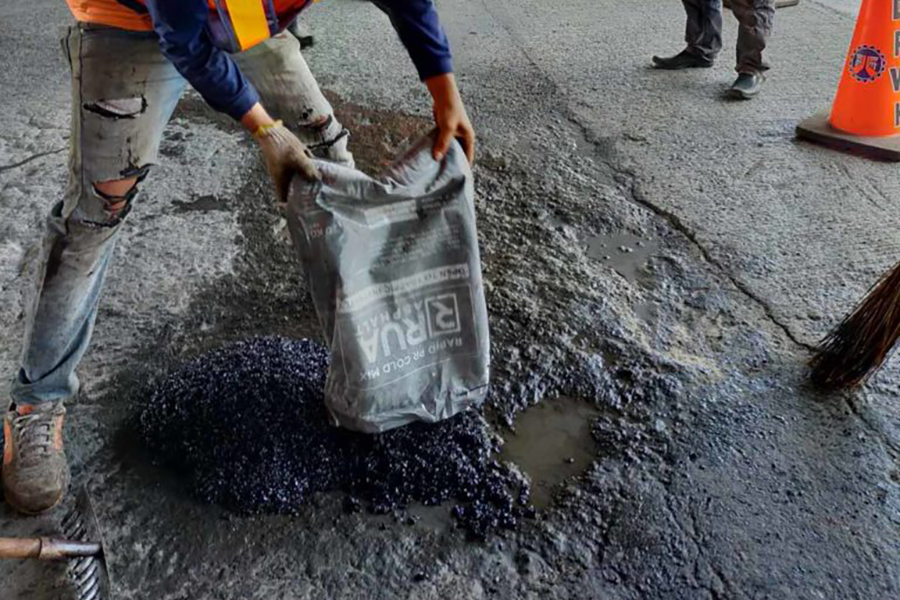Elevate the Look and Feel of Your Residential Or Commercial Property with Expert Commercial Parking Lot Paving
Elevate the Look and Feel of Your Residential Or Commercial Property with Expert Commercial Parking Lot Paving
Blog Article
Unlocking the Tricks of Hot Mix Asphalt Innovation
Checking out the midsts of warm mix asphalt innovation discovers a globe where precise processes and accurate formulas converge to shape our roadways and framework. The fusion of aggregates, binders, and fillers isn't merely a construction job yet a strategic orchestration of toughness and effectiveness. As we peer into the intricate dance of parts, a tapestry of strength and sustainability unfolds. What exists below this surface area of asphaltic proficiency, and what tricks wait to be unveiled in the world of paving innovations?
Significance of Warm Mix Asphalt
Warm Mix Asphalt plays an essential duty in modern infrastructure advancement due to its longevity and cost-effectiveness. As the most commonly used paving material for roads, highways, and auto parking lots, Warm Mix Asphalt provides a range of benefits that contribute to its value in building and construction tasks.
The durability of Hot Mix Asphalt stems from its composition, which includes aggregates, binder, and filler materials that are carefully picked and blended to fulfill certain efficiency demands. This exact combination results in a strong and adaptable pavement that can withstand frequent use without substantial damage. Warm Mix Asphalt is 100% recyclable, additional improving its sustainability and environmental advantages. Generally, the value of Warm Mix Asphalt in infrastructure development can not be understated, as it proceeds to be a foundation of contemporary building practices.
Elements of Asphalt Mixes
The composition of asphalt blends consists of meticulously selected accumulations, binder, and filler materials that are crucial for attaining specific efficiency requirements. Aggregates are the key component of asphalt blends, providing stamina and security. These aggregates can be all-natural, such as gravel or crushed rock, or synthetic, like recycled materials from old sidewalks. The binder, generally asphalt or asphalt concrete, holds the aggregates with each other and offers adaptability and resilience to the mix. The option of the binder is essential as it directly affects the mix's efficiency in different weather condition problems. Fillers, such as hydrated lime or Portland cement, are made use of to boost the mix's workability and aging resistance. Angled Parking.
The mix and percentage of these parts play a significant role in identifying the high quality and performance of the asphalt mix. Engineers thoroughly create the mix to satisfy certain demands, taking into consideration variables like website traffic quantity, environment problems, and pavement life expectancy. Proper selection and balancing of accumulations, binder, and fillers are essential for creating durable, long-lasting asphalt sidewalks.
Combining and Production Methods

As soon as review the aggregates are picked, the binder, often asphalt cement, is contributed to bind the materials together. The binder's quality and quantity substantially affect the mix's adaptability, stamina, and resistance to environmental elements. Additionally, fillers like hydrated lime or Rose city concrete may be incorporated to enhance specific characteristics of the asphalt mix, such as its workability or moisture resistance.
During production, the accumulations and binder are warmed, normally in between 250-325 ° F(121-163 ° C ), to help with mixing and make certain correct finish of the aggregates. Home Page The blending process must be comprehensive to attain an uniform mix that promotes the wanted performance qualities of the asphalt. Numerous methods, such as batch mixing or drum blending, are employed to attain constant and premium asphalt mixes for construction tasks.
Elements Affecting Asphalt Efficiency
Variables influencing asphalt efficiency incorporate a range of variables that affect the durability, durability, and general top quality of asphalt pavements. One essential aspect is the high quality of products used in the asphalt mix.

Ecological conditions additionally influence asphalt performance. Temperature level variations, wetness seepage, and web traffic loads can all affect the structural integrity of the pavement. Layout considerations, such as sidewalk density and drainage, are crucial in guaranteeing the lasting performance of the asphalt pavement. By meticulously taking into consideration these engineers, contractors and elements can optimize asphalt performance and improve the solution life of pavements.
Lasting Practices in Asphalt Innovation

In addition, the advancement of warm-mix asphalt (WMA) innovations has gained grip in recent times. WMA enables the production and placement of asphalt blends at reduced temperature levels compared to typical hot-mix asphalt, causing minimized energy consumption and greenhouse gas exhausts. The use of porous asphalt mixes can help alleviate stormwater runoff concerns by enabling water to infiltrate with the pavement and right into the ground, promoting all-natural water filtration and reenergize processes. By applying these sustainable techniques, the asphalt market can contribute to constructing a more resilient and ecologically friendly facilities network.
Verdict
Finally, warm mix asphalt modern technology plays a critical function in modern-day facilities development because of its longevity and cost-effectiveness. By carefully balancing components, utilizing correct blending methods, and thinking about numerous aspects, designers can develop high-quality asphalt mixes that endure heavy traffic loads and harsh weather. Welcoming lasting methods, such as utilizing warm-mix technologies and recycled materials, even more enhances the environmental kindness of asphalt modern technology.
Mixing and production techniques in warm mix asphalt innovation involve the precise mix and handling of aggregates, binder, and fillers to develop a high-performance and sturdy asphalt mix.Aspects influencing asphalt efficiency include a range of variables that influence the longevity, durability, and overall top quality of asphalt pavements. Sustainable techniques in asphalt innovation incorporate different initiatives intended at minimizing the environmental influence of asphalt manufacturing and paving processes. By including reclaimed asphalt sidewalk (RAP) and recycled asphalt roof shingles (RAS) right into new asphalt blends, the market can significantly lower the consumption of raw materials and power, while also lowering garbage dump waste.
WMA permits for the production and positioning of asphalt mixes at lower temperature levels compared to typical hot-mix asphalt, resulting in decreased power consumption and greenhouse gas discharges.
Report this page